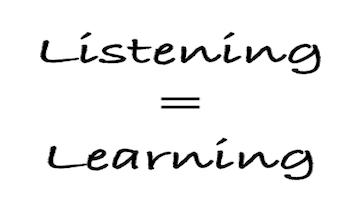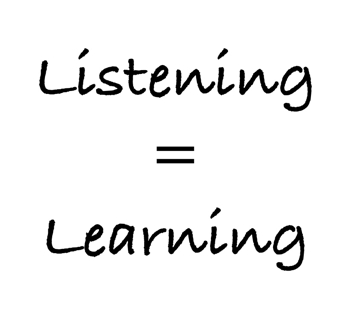
Leadership Skills: Listening
“Being listened to is so close to being loved that most people cannot tell the difference.”
–David Oxberg
 Listen to the Podcast
Listen to the Podcast

 Get it on Stitcher HERE.
Get it on Stitcher HERE.
Here’s the transcript
The Leadership Skills of The Musical Conductor
Listening is a primary skill for the Transformational Leader. My model for great leadership is based on the skills of the musical conductor, who is a great listener. Success is directly and immediately experienced as a result of effective leadership by the conductor. When the conductor does not get the desired result, then it’s time to change whatever technique or cue that’s not bringing the intended results.
The conductor knows what’s wrong because he or she is listening intently. To be able to draw out the best from the musicians, the conductor must listen to what’s going on in the room and respond appropriately.
Listening is key to understanding what’s really going on. The conductor has developed a rehearsal plan for achieving the desired results in a specific period of time, however things happen that can’t be predicted when developing the plan. The competent leader pays attention to what’s happening and responds accordingly, just like the conductor.
Listening is an Underutilized Leadership Skill
Many leaders are not fully aware of the power of listening. Many are too busy attempting to activate their personal agendas to be aware of the necessary information available around them. The Transformational Leader builds strong leaders on teams. As in a symphony orchestra, the high-performance team is comprised of highly skilled individuals. When these highly skilled individuals function together as a unit, they must be able to fully access their individual skills and acquire an additional skill set, as well…the ability to listen and respond to others on the team. The finest orchestras in the world rehearse continuously in order to maintain the highest level of ensemble status. This is a skill set developed over time by rehearsing together.
Leadership is a Culture of High Performing Leaders – An “Ensemble”
So, why don’t business and nonprofit teams rehearse best practices? Why don’t team members learn to listen intently to what’s going on around them? It might be that the leader is setting an example of talking and not listening. Leaders model, and team members receive – good or bad.
Just like a musical ensemble, the team is a reflection of the leader.
See What Others are Saying About Listening
In his blog post, “How To Listen”, Seth Godin points out that there are 4 times the amount of Google searches for speaking over the number of searches for listening. We are obsessed with speaking and lose sight of the fact that listening is at least twice as important (clue: we have 2 ears and one mouth).
In his book, Tao of Leadership, John Heider says, “But what cannot be said can be demonstrated: be silent, be conscious.” Listening is a skill that engages the whole person. Helen Kemp teaches children’s choirs the following, saying, “Body, mind, spirit, voice: it takes the whole person to sing and rejoice.” One could say similar things about leadership.
Transformation Begins with the Leader
The Transformational Leader is a fully present leader utilizing every sense and every skill. Leaders are present as a whole person.
Being fully present means that you are aware of what’s going on. Listening is the key to understanding. Listen with your eyes as well as with your ears.
Let’s be quiet and see what happens.
Hugh Ballou
The Transformational Leadership Strategist TM
Subscribe to The Transformational Leadership Strategist by Email
(c) 2017 Hugh Ballou. All rights reserved



 Listen to the Podcast
Listen to the Podcast